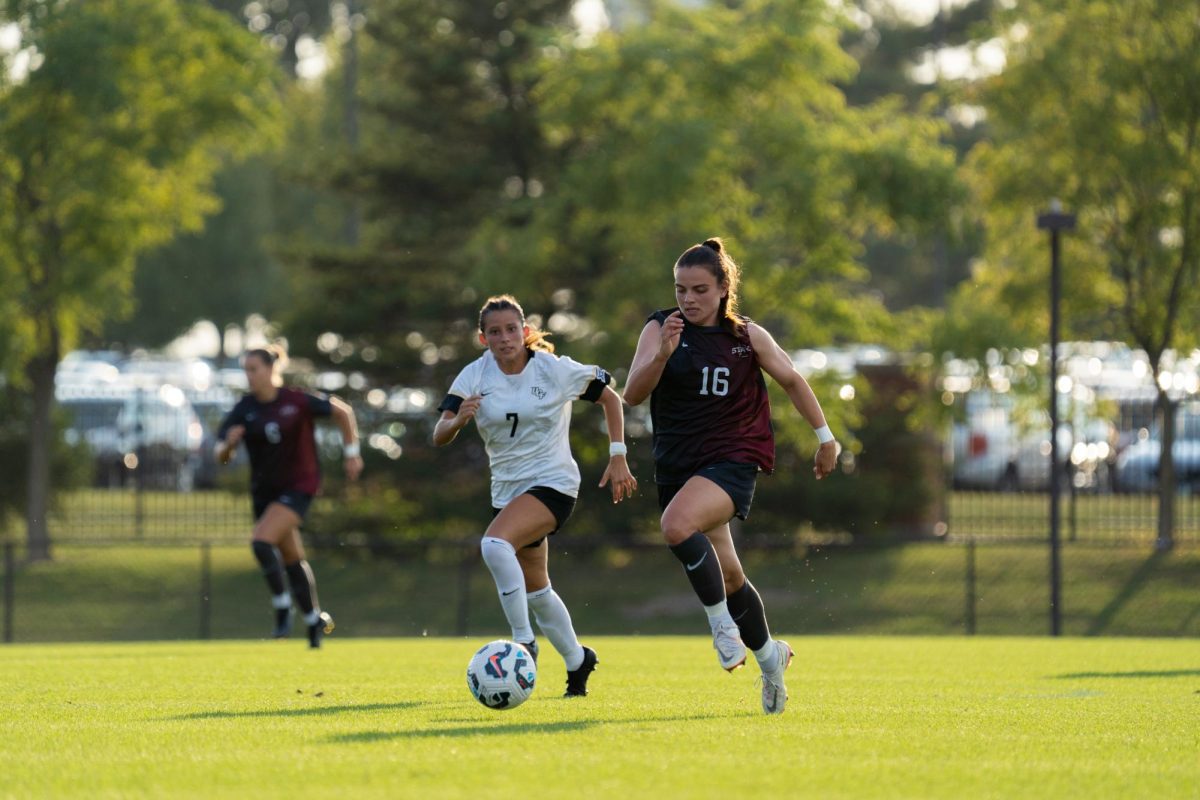Stretching, therapy help heal muscle pain
November 2, 1998
Editor’s Note: Irene Lewis-McCormick is a graduate student in health and human performance. If you would like to ask a fitness-related question, please send an e-mail request to [email protected].
Q: I am recovering from a pain running from my lower back down into my leg. The doctor diagnosed it as a pinched sciatic nerve. The pills he prescribed are helping, but I would like to know: Are there any exercises or stretches to speed up the recovery process and prevent it from happening again?
A: I am not a physical therapist, but I recommend that in addition to taking your doctor’s advice and prescription medication, you go see a physical therapist.
I also suggest that you start a regular stretching program. The American College of Sports Medicine recommends stretching three times per week. Increase your body temperature first, then hold each stretch for 18 seconds.
There is quite a vast amount of research on muscle balance and the problems and injuries associated with imbalances. If one muscle group is stable, meaning that it’s strong and tight, often the antagonist muscle group (the opposite group) is mobile, more flexible and usually weaker.
Imbalances lend themselves to injury, and pain is often the result. A common muscle imbalance called hyperlordosis results from tight lower back muscles and weak abdominal and trunk muscles. This condition is very common.
When people complain of occasional low-back pain, pelvic tilts are the exercise I recommend. To perform them, stand upright, with feet hip-width apart and knees slightly bent. Place your hands on your hips and flatten the lower back by pulling your belly button closer to your ribs. Then arch your lower back, pulling the belly button further away from the ribs.
The idea is to stretch the muscles of the lower back by tilting the hips. This can be done lying on your back or on your hands and knees. In addition to stretching the lower back muscles, it is important to strengthen the weak links — the abs.
Tight and strong hamstring muscles and hip flexor muscles, in addition to the tight lower back muscles, also will contribute to lower back pain. The quadriceps, although usually about three times stronger than the hamstring muscle group, may be more mobile than the hamstrings.
When the hip flexors and the hamstrings are tight, they work in opposition to the abdominal muscles. They actually pull the hips out of their ideal alignment, and this puts an individual at an increased risk for lower back injuries. The hips should set right under the body, without an excessive sway back.
By stretching the stabilizing muscle group (hamstrings, lower back and hip flexors) and strengthening the trunk muscles (abdominals and obliques), you will find you have increased mobility and a healthier lower back.






